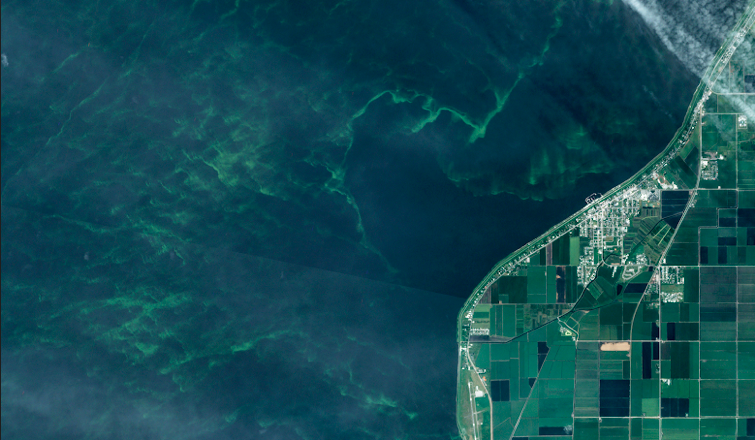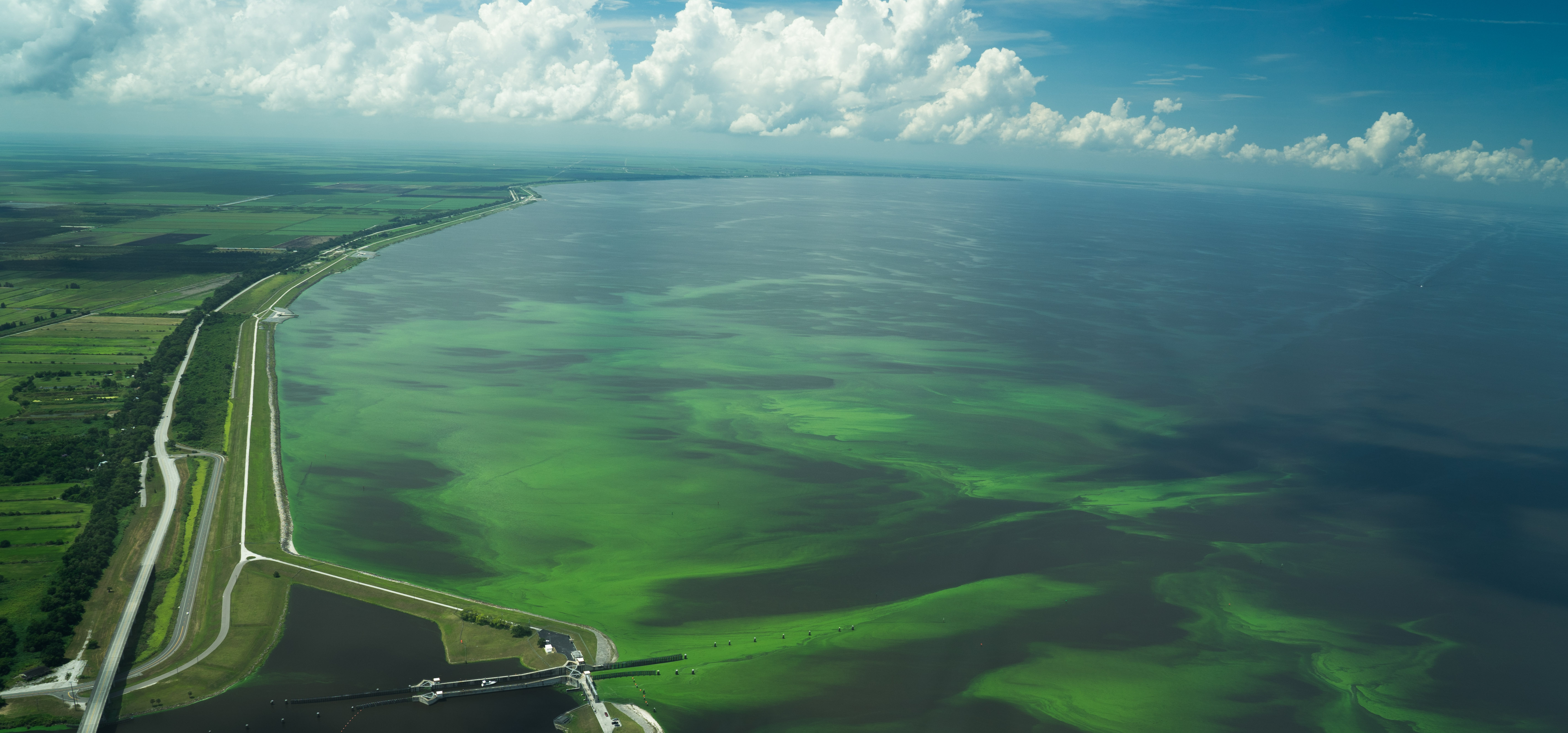By Chris Maroney, co-founder of Bullsugar.org
Another year of Lake Okeechobee toxic discharges to the Caloosahatchee and St. Lucie estuaries highlights an uncomfortable fact for Florida politicians: Water managers claim their top priority is human health and safety, but in truth, the whole system is operated for the benefit of sugarcane.
In July 2016 the toxic guacamole blanketing the St. Lucie made national news; in 2018, the Caloosahatchee is taking it on the chin with both higher toxicity and uglier images. More important, with scientific evidence linking toxic algae to ALS, Alzheimer’s Disease, liver cancer and other life-threatening ailments, it’s time to expose Florida’s deceptive water management priorities that are putting humans at risk on a recurring basis.
The two agencies in charge of the system, South Florida Water Management District (SFWMD) and Army Corps of Engineers (USACE), conflate flood control for humans with flood control for sugarcane fields. Humans and cane fields need to be separated and treated by water managers independently, with different levels of priority. Congress has the authority, and the moral obligation, to make this happen.
Without getting too ‘wonky,’ a 1948 law essentially allows sugar companies, predominantly US Sugar and Florida Crystals today, to dump polluted runoff from privately owned fields into a public network of canals whenever it rains. It rains a lot in Florida during the summer, and the sugar companies are always allowed to dump their runoff into the canals first, regardless of how it impacts others.
Draining 800 square miles of sugarcane fields grown in a bowled-out former swamp overwhelms the system, flooding out everything, forcing discharges east and west and even back-pumping–forcing runoff back uphill into Lake Okeechobee.

Image courtesy of Planet Labs, Produced by Earthrise Media
It’s the back-pumping that really exposes the fiction of ‘humans first,’ because letting canals flooded with sugarcane runoff flow into a lake that is at the same time being lowered to protect Glades residents from dike failure is contradictory.
The system has always operated like this, all while the sugar industry fought a long-term solution that could provide enough storage and treatment so that no one got hurt in high- or low-water times. Since they get top priority, sugarcane never gets hurt. The USDA crop reports tell that story clearly. If the industry weren’t always the top priority, maybe they would be willing partners on a long-term solution.
The long-term solution is well known, as stated in the Now or Neverglades Declaration: use additional land south of Lake Okeechobee to expand water storage and treatment facilities to clean and send water south to Everglades National Park where it is needed. The EAA Reservoir that passed into state law in 2016 was bitterly contested–and shrunk–by sugar industry lobbyists, but it could become part of the solution. More publicly owned land in the EAA will be needed for a true fix.
There are also disingenuous calls for ‘fixes’ that are really distractions, meant to take the focus away from cleaning and sending water south where it’s needed. Deep injection wells, filtering technology, and filling Lake Okeechobee even higher-among other misguided proposals-should not be allowed to derail the decades-old settled science of restoring the system’s original balance as much as possible.
Until a real fix is in place, it’s time to change the system priorities so that people’s lives and health come first – Glades lives below the dike, and also communities in the path of toxic algae-laden discharges.
Congress can, and out of decency must tell the USACE to manage South Florida’s water so as not to kill or hurt humans.
After all, it is paid for with our tax dollars and run on publicly owned land.
To learn more about the problems plaguing South Florida, visit www.bullsugar.org. Bullsugar.org is dedicated to stopping the damaging discharges into the St. Lucie and Caloosahatchee estuaries and restoring the flow of clean freshwater to Florida Bay. They aim to empower voters to take back our water and government and to ensure a lasting legacy of clean water and healthy estuaries for future generations.
*Featured image courtesy of Jacqui Thurlow-Lippisch



When will this end? Didn’t we VOTE in the last election in regard to the water?
The health of the people should be top priority!